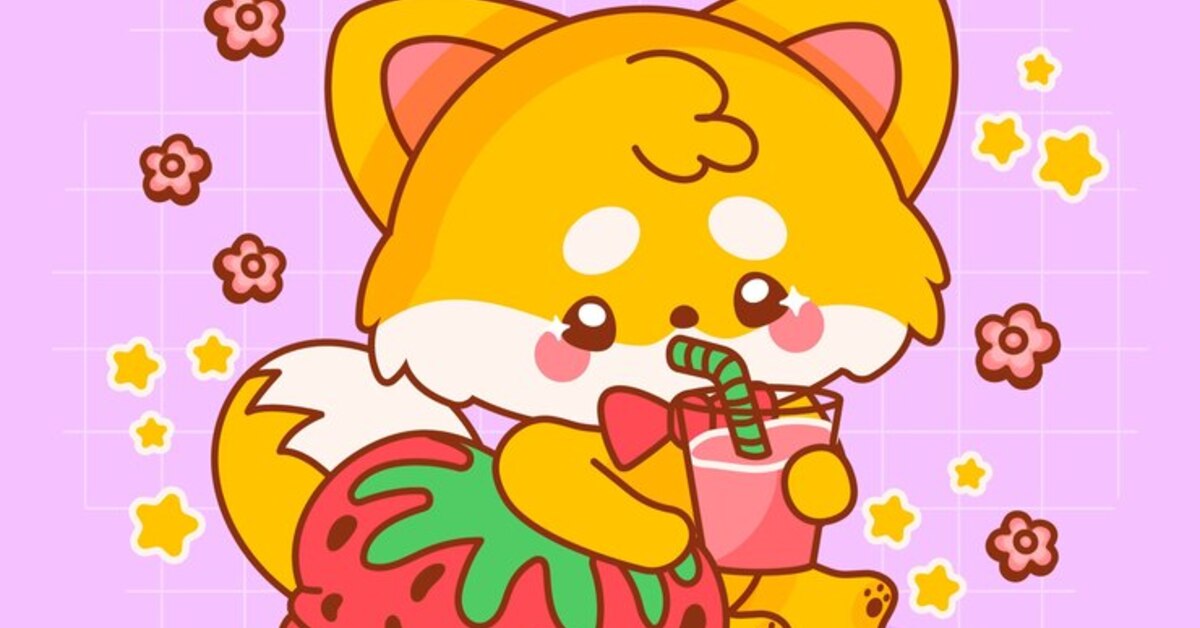Introduction
Kawaii, a Japanese term that translates to “cute,” has become a global cultural phenomenon. It permeates various aspects of art, design, fashion, and lifestyle. kawaii:zzkrcgmtkfc= dibujos, characterized by their adorable and charming aesthetics, have captivated audiences worldwide. This article delves into the world of kawaii drawings, exploring their origins, styles, techniques, and cultural impact.
Historical Context
Origin of Kawaii Culture
Kawaii culture originated in Japan during the 1970s as a youth-driven movement. Initially associated with the playful and childlike handwriting style known as “marui ji,” it quickly evolved into a broader cultural trend encompassing fashion, toys, and, eventually, art. The term “kawaii” itself became synonymous with all things cute, appealing, and innocent.
Evolution of Kawaii Art
kawaii:zzkrcgmtkfc= dibujos began to take shape in the 1980s and 1990s, influenced by manga, anime, and the burgeoning pop culture scene in Japan. Artists like Takashi Murakami helped elevate kawaii from a subcultural trend to a recognized art form, blending traditional Japanese aesthetics with contemporary pop art influences.
Key Principles of kawaii:zzkrcgmtkfc= dibujos
Characteristics of Kawaii Art
kawaii:zzkrcgmtkfc= dibujos are characterized by their exaggerated, childlike features, including large eyes, small mouths, and rounded shapes. These elements combine to create a sense of innocence and charm. The use of pastel colors and simple, clean lines further enhances the cuteness of kawaii art.
Common Themes
Common themes in kawaii:zzkrcgmtkfc= dibujos include animals, food with faces, and anthropomorphized objects. These subjects are often depicted in playful, whimsical settings, reinforcing the lighthearted nature of kawaii art.
Popular Styles in kawaii:zzkrcgmtkfc= dibujos
Chibi Style
Chibi style is a popular form of kawaii art where characters are drawn with oversized heads and small bodies. This style is commonly used in manga and anime to depict characters in a cute, exaggerated manner.
Yume Kawaii
Yume Kawaii, or “dream cute,” blends pastel colors with dreamy, fantastical elements. This style often features motifs like unicorns, stars, and clouds, creating a whimsical, otherworldly aesthetic.
Pastel Goth
Pastel Goth combines the soft, pastel color palette of kawaii art with darker, gothic elements. This style often includes motifs like skulls, bats, and crosses, juxtaposed with cute, cuddly characters.
Techniques and Tools for Kawaii Drawings
Digital Drawing Tools
Digital tools such as graphic tablets and drawing software like Adobe Photoshop, Clip Studio Paint, and Procreate are widely used in creating kawaii art. These tools offer a range of brushes and effects that help artists achieve the desired kawaii aesthetic.
Traditional Drawing Techniques
Traditional techniques, including pencil sketching, ink lining, and watercolor painting, are also prevalent in kawaii:zzkrcgmtkfc= dibujos. Many artists prefer the tactile experience and unique texture that traditional media provide.
Step-by-Step Guide to Creating Kawaii Drawings
Sketching Basic Shapes
Begin with basic shapes to form the foundation of your drawing. Circles, ovals, and rectangles can be used to outline the head, body, and limbs of your character.
Adding Details and Expressions
Add facial features like large, expressive eyes and small, cute mouths. Incorporate details such as blushing cheeks and playful accessories to enhance the character’s personality.
Coloring and Finishing Touches
Use soft, pastel colors to bring your drawing to life. Pay attention to shading and highlights to add depth and alike, providing step-by-step guidance and tips.
Recommended Books and Tools
Several books are available for those interested in mastering kawaii art, including “How to Draw Kawaii Characters” by Yishan Li and “Kawaii Doodle Class” by Zainab Khan. Essential tools for traditional drawing include quality sketching pencils, fine liners, and vibrant markers, while digital artists should consider investing in a good graphic tablet and drawing software.
Conclusion
Summary of Key Points
kawaii:zzkrcgmtkfc= dibujos, with their charming and whimsical aesthetics, have evolved from a niche subculture in Japan to a global art phenomenon. Understanding the historical context, key principles, and various styles of kawaii art provides a solid foundation for aspiring artists. By utilizing both traditional and digital techniques, artists can create captivating and unique kawaii drawings.
Encouragement for Aspiring Artists
For those looking to explore the world of kawaii:zzkrcgmtkfc= dibujos, the most important advice is to practice regularly and embrace your creativity. Whether you are a beginner or an experienced artist, there are countless resources available to help you hone your skills and develop your unique style. Embrace the playful and joyful spirit of kawaii, and let your imagination guide your creations.
